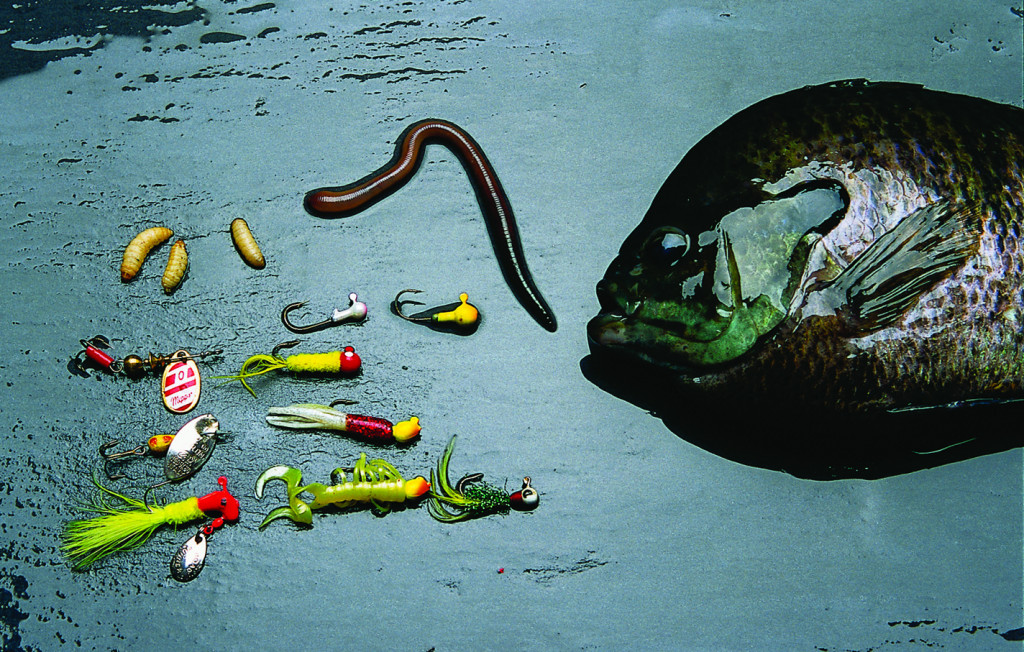
Baits to catch bluegill could include, from top left, wax worms, night crawlers, jigs, spinners, and Roadrunners. (Nebraskaland Magazine/Nebraska Game and Parks Commission)
With fishing bait, you can use things fish want to eat, or things that look, smell like, or mimic things fish think they want to eat.
You can use live, artificial or prepared baits to attract the fish to your hook using movement, vibration, color and/or scent.
New anglers should learn the differences between types of baits and understand how to choose a bait for the type of fish he or she wants to catch.
Live baits
Live baits include night crawlers, minnows, crayfish, tadpoles, leeches, grasshoppers, crickets, wax worms, or just about any bug you can catch in your yard. Earthworms are an excellent choice for new anglers and will attract a variety of fish, including bluegill, catfish, crappie and largemouth bass. Live bait always should be fresh and kept alive, and the refrigerator is a good place to store it if your roommates don’t mind.
Some water bodies have regulations against using live fish as bait. If using minnows, make sure the regulations where you are fishing allow for their use. Transferring fish you caught in one water body to another to use as bait is illegal in Nebraska. Read the current Nebraska Fishing Guide at OutdoorNebraska.gov/guides for more information.
Artificial baits
Artificial baits – or lures – include spinners, spoons, jigs, plugs, spinnerbaits, soft plastics, and more. They come in a variety of styles, colors, patterns and sizes.
Lures are designed to resemble and move like prey, and often will mimic fish or aquatic animals. Even if they don’t look like fish or critters to our eyes, their color patterns, reflections and movements in the water are designed to mimic living things. Some lures are flashy, and fish are instinctively attracted to them.
Lures in natural colors that resemble prey, like silver and white, are useful for clear-water conditions. In murky water, brightly colored lures can be a good pick. Some baits are designed to attract fish with scents and tastes and are effective when targeting fish that don’t feed by sight. Some artificial baits are designed to attract the angler’s money.
The angler also can manipulate the movement and depth of the lures; how fast they are retrieved and the action of the rod to snag a fish.
Prepared baits
Who hasn’t seen in stores the rows of jars of brightly colored dough bait designed to catch trout? Dough bait, either commercially made or homemade, is a popular bait to attract catfish, as are chicken livers. Canned corn can be an effective bait to catch bluegill. Frozen shrimp and hot dogs are other examples of prepared baits you probably already have around your home.
If you are just getting into fishing and want more details, a helpful resource for all things beginner fishing is Game and Parks’ Going Fishing Guide, available at OutdoorNEbraska.gov/howtofish. If you want to take a new angler fishing and become eligible to win prizes, register for the Take ’em Fishing Challenge at OutdoorNebraska.org, where fishing permits also are available.
|
0 Comments